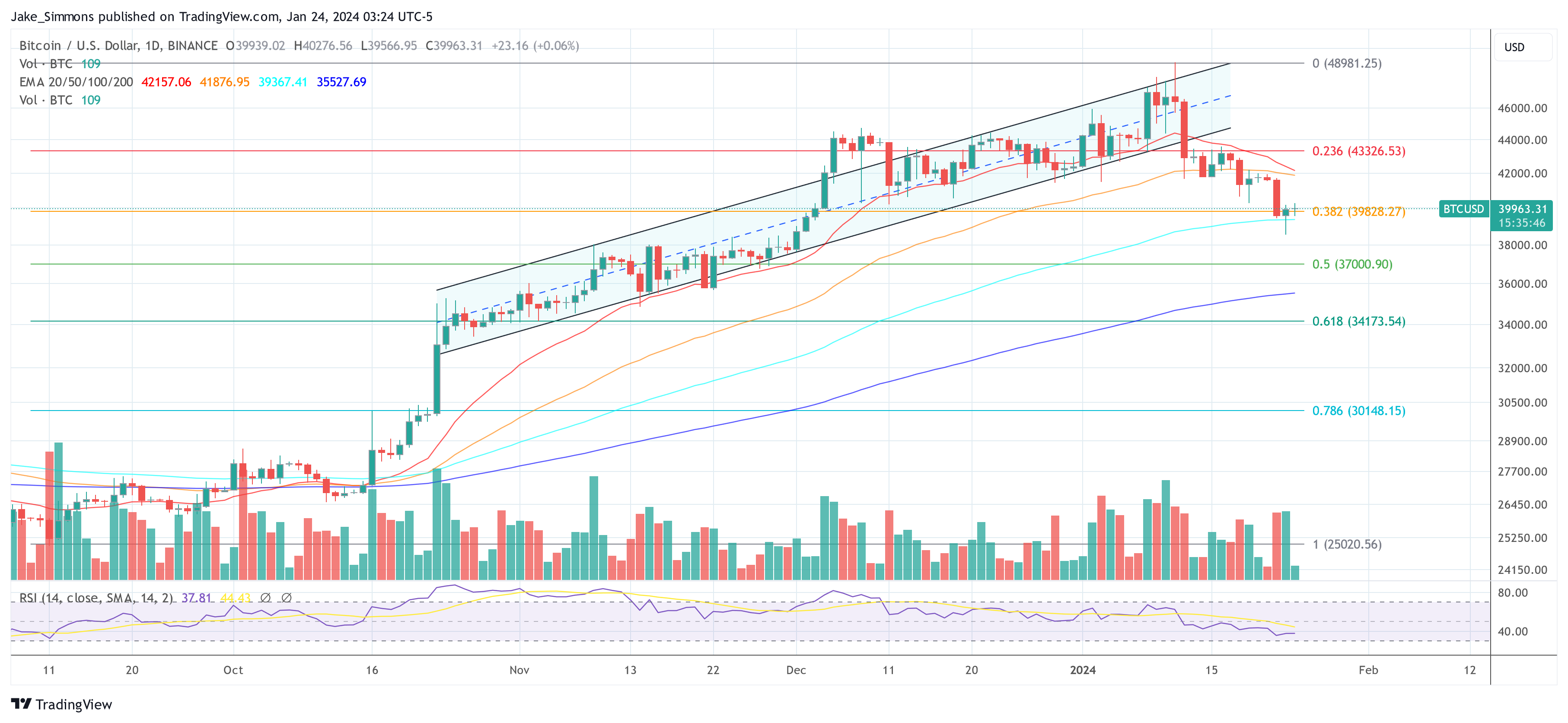In his latest essay, BitMEX founder Arthur Hayes puts forth a contrarian perspective on the recent decline in Bitcoin’s price, refuting the mainstream narrative that attributes the decline to outflows from the Grayscale Bitcoin Trust (GBTC). Hayes instead points macroeconomic maneuvers and monetary policy shifts as the real driving forces behind Bitcoin’s volatility.
Monetary policy and market reactions
Hayes adds momentum to his analysis by shedding light on the U.S. Treasury Department’s recent strategic shift on borrowing, a decision announced by Janet Yellen on November 1. This shift to government bonds (T-bills) has led to a substantial injection of liquidity, forcing money market funds to reallocate their money market funds. their investments from the Fed’s Reverse Repo Program (RRP) into these government bonds, yielding higher returns.
Hayes articulates the significance of this move by stating, “Yellen acted by shifting her department’s lending to government bonds, adding hundreds of billions of dollars in liquidity to date.” However, he contrasts this tangible financial maneuver with the Federal Reserve’s mere rhetoric about future rate cuts and the phasing out of quantitative tightening (QT), noting that these discussions have not translated into actual monetary stimulus.
While traditional financial markets, particularly the S&P 500 and the Nasdaq 100, responded positively to these developments, Hayes argues that Bitcoin’s recent price trajectory serves as a more accurate barometer of underlying economic currents. He notes: “The real smoke alarm for the direction of dollar liquidity, Bitcoin, is sending a warning signal.”
He notes the cryptocurrency’s decline from its peak and correlates it with the swings in yields on the 2-year U.S. Treasury bond, suggesting a deeper economic interaction is at work. “Coinciding with Bitcoin’s local high, U.S. Treasury yields hit a local low of 4.14% in mid-January and are now trending higher,” Hayes noted.
Dissecting the true reasons behind the Bitcoin dip
Hayes focuses on the story surrounding GBTC and emphatically rejects the idea that outflows from GBTC are the main catalyst for Bitcoin’s price movements. He clarifies: “The argument for Bitcoin’s recent dump is the outflow from the Grayscale Bitcoin Trust (GBTC). That argument is bogus, because if you add the outflows from GBTC against the inflows into the newly listed spot Bitcoin ETFs, the result, as of January 22, is a net inflow of $820 million.”
This realization shifts the focus to the economic mechanisms that play a role. The crux of Hayes’ argument lies in the anticipation surrounding the expiration of the Bank Term Funding Program (BTFP) and the Federal Reserve’s reluctance to adjust interest rates to a range that would reduce financial pressure on smaller, non-negotiable big-to-have-to-have countries would alleviate. Failing (TBTF) banks.
Hayes explains: “Until interest rates are reduced to the above levels, there is no way these banks can survive without the government support provided through the BTFP.” He predicts a looming mini-financial crisis in the event of the BTFP freeze, which he believes will force the Federal Reserve to move from rhetoric to tangible action – namely rate cuts, a wind-down of the QT program and possibly a resumption of quantitative easing. QE).
“I believe Bitcoin will fall before the BTFP extension decision on March 12. I didn’t expect this to happen so quickly, but I think Bitcoin will find a local bottom between $30,000 and $35,000. While the SPX and NDX are dumping due to a mini-financial crisis in March, Bitcoin will rise because it will lead the eventual translation of interest rate cuts and money printing talk on behalf of the Fed into the action of pressing that Brrrr button,” says Hayes. writes.
Strategic trading moves in a turbulent market
In a revealing look at his tactical trading strategies, Hayes shares his approach to navigating the tumultuous market landscape. He discloses his positions, including the purchase of puts and the strategic adjustment of his BTC holdings. He concludes:
A 30% correction from the ETF approval high of $48,000 is $33,600. Therefore, I believe Bitcoin has support between $30,000 and $35,000. That’s why I bought $35,000 strike puts on March 29, 2024. […] Bitcoin and crypto in general are the last freely traded markets worldwide. As such, they will anticipate changes in dollar liquidity ahead of the manipulated TradFi fiat stock and bond markets. Bitcoin tells us to look for Yellen and not Talkin’.
At the time of writing, BTC was trading at $39,963.

Featured image created with DALL·E, chart from TradingView.com
Disclaimer: The article is for educational purposes only. It does not represent NewsBTC’s views on buying, selling or holding investments and of course investing involves risks. You are advised to conduct your own research before making any investment decisions. Use the information on this website entirely at your own risk.

